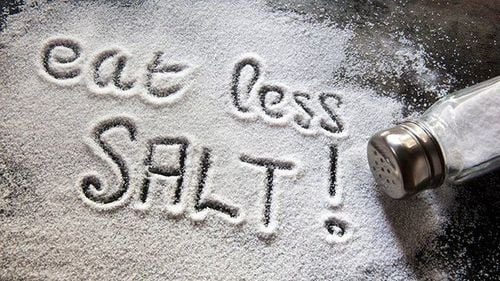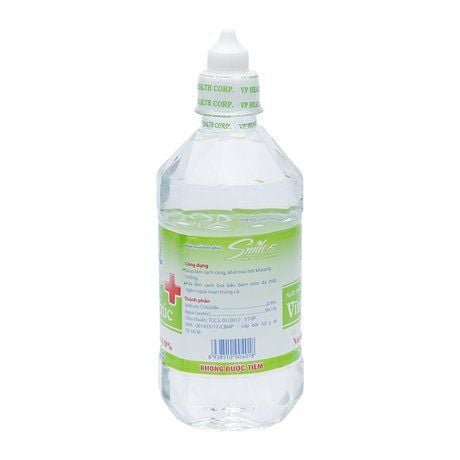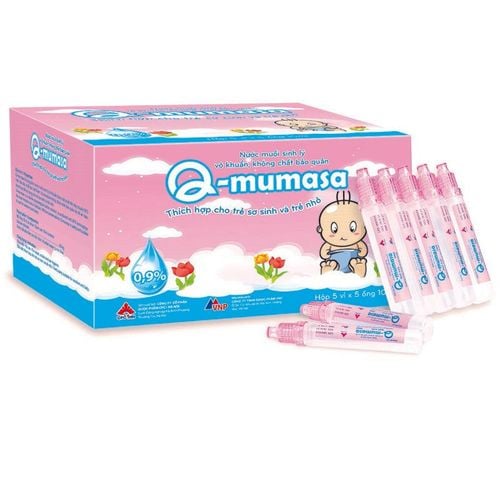This is an automatically translated article.
Salt is considered one of the most important cooking ingredients worldwide. Without salt, meals would become bland and less appealing. However, not all salts are created equal. You can choose salt depending on your needs or preferences.
1. What is salt?
Salt is a crystalline mineral, consisting of two main elements, sodium (Na) and chlorine (Cl). These are all very essential substances for the body, keeping an important function in helping the brain and nerves transmit electrical impulses, thereby maintaining human life.
Most of the world's salt is harvested from salt mines, evaporating from seawater or mineral-rich waters.
In general, salt is used by people for many different purposes, the most common being as a seasoning in food, helping to increase the rich flavor of dishes.
In addition, this mineral is also used a lot to preserve foods and prevent harmful bacteria from growing. However, when used in large amounts, salt will cause a number of health problems, typically increased blood pressure.
In the Western diet, most of the sodium comes from processed foods. If your diet consists mainly of unprocessed, whole foods, you don't need to worry much about adding salt to foods.
Trắc nghiệm: Muối trong thực phẩm, natri, huyết áp và sức khỏe của bạn
Muối, natri là chất khoáng cần thiết cho cơ thể để duy trì hoạt động ổn định. Tuy nhiên, chế độ ăn thừa muối có nguy cơ cao dẫn tới các vấn đề sức khỏe nghiêm trọng. Cùng làm bài trắc nghiệm sau đây để hiểu hơn về những ảnh hưởng của các khoáng chất này tới huyết áp và sức khỏe bạn thế nào nhé.
Nguồn tham khảo: webmd.com
2. Refined salt (normal salt)
It can be said that refined salt is the most widely used salt worldwide. This salt has undergone intense purification, so that most of the trace minerals and other impurities are completely removed.
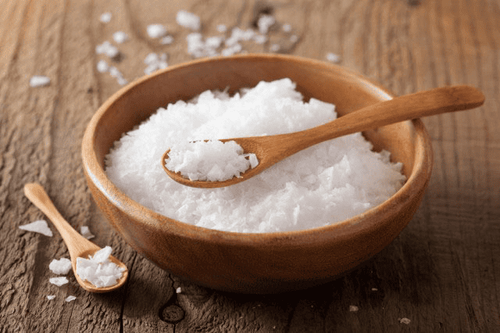
For finely ground salts, agglomeration may occur, forming lumps. To overcome this problem, some anti-precipitation agents are added when refining salts to make them smoother and free from lumps.
In common table salt contains up to 97% pure sodium chloride, even higher. In some parts of the world, table salt also contains additional amounts of iodine, which helps combat iodine deficiency, a leading cause of hypothyroidism, intellectual disability and other health problems.
If you are a person who does not regularly eat iodized salt, you can choose some other foods that are high in iodine, such as milk, eggs, fish or seaweed.
3. Sea salt
Sea salt is harvested by evaporating sea water. Similar to regular table salt, they mainly contain sodium chloride. However, depending on the region and recipe, this salt contains many different trace minerals, including zinc, iron and potassium.
The darker the color of sea salt, the higher its concentration of impurities and nutrients. However, at present, seawater pollution is at an alarming level, so sea salt can contain a large amount of heavy metals, especially lead - a very harmful agent to human health. when consumed in the body.
Besides, sea salt also contains microplastics, leftovers from plastic waste. Although there is no clear evidence on the effects of microplastics on human health, some scientists say they still have the potential to pose some potential health risks.
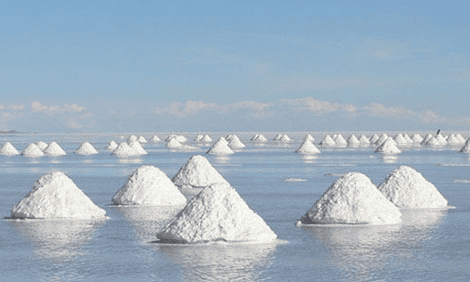
Unlike refined salt, sea salt is coarse in nature, and has not been thoroughly ground. Therefore, when you add them to food after cooking, you will experience a stronger flavor than regular salt. In addition, each brand creates a unique sea salt flavor, which often depends on the amount of trace minerals and impurities present in the sea salt during processing.
4. Himalayan Salt
Himalayan salt is mined from the second largest salt mine in the world, called Khewra in Pakistan. Himalayan salt contains a small amount of iron oxide (rust), a substance that gives salt its pink color, so it is also known as pink Himalayan salt.
In addition, this salt also provides some minerals such as iron, calcium, potassium and magnesium, making them slightly lower in sodium than refined salt.
Himalayan salt offers a different flavor than other salts, this is also the reason why many people love it so much. Furthermore, the difference in color of Himalayan salt can increase the aesthetic appeal of dishes.
5. Kosher salt
The name Kosher salt is derived from the strict laws of the traditional Jewish diet. They require that the blood of the meat be cleaned before eating. Kosher salt has a coarse texture, is flaky, and is particularly effective in extracting blood, so it was commonly used in Jewish daily life. It is this structure that makes the big difference between regular salt and kosher salt. With a large array size, it makes it easy for chefs to pick up and sprinkle them on food.
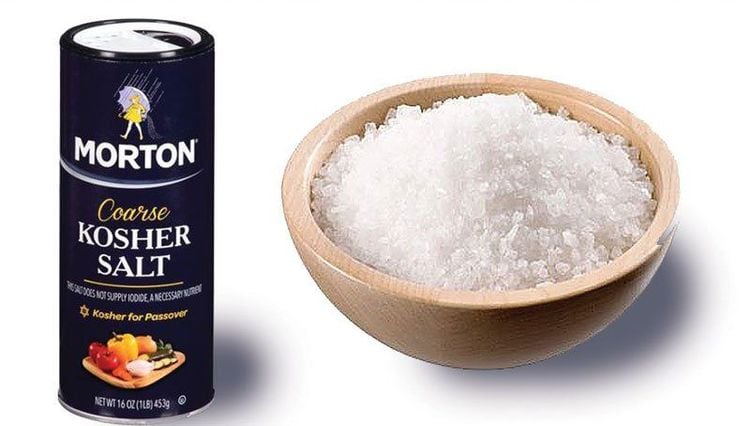
Although Kosher salt has a distinct texture and flavor, when dissolved in food it is often difficult to tell the difference from regular table salt. Besides, this salt usually contains very few additives, such as iodine, or anti-precipitation agents.
6. Celtic Salt
Celtic salt is the first widely known sea salt in France. It is usually gray in color and quite moist because it contains a small amount of water.
Celtic salt provides a slightly lower amount of sodium and minerals than regular table salt.
7. Difference in taste
Chefs and gourmets primarily choose salts based on their texture, taste, color and convenience for food preparation.
Impurities in salt, including trace minerals, can affect the taste and color of salt. In addition, the grain size of salt also gives different flavors to the dish, such as salt with large grain size often has a stronger taste and lingers longer on your tongue.
However, when salt dissolves into dishes, the difference in taste is usually negligible. If you prefer to use your fingers to sprinkle salt on food, you should choose salts with large grain sizes that make it easier to handle.
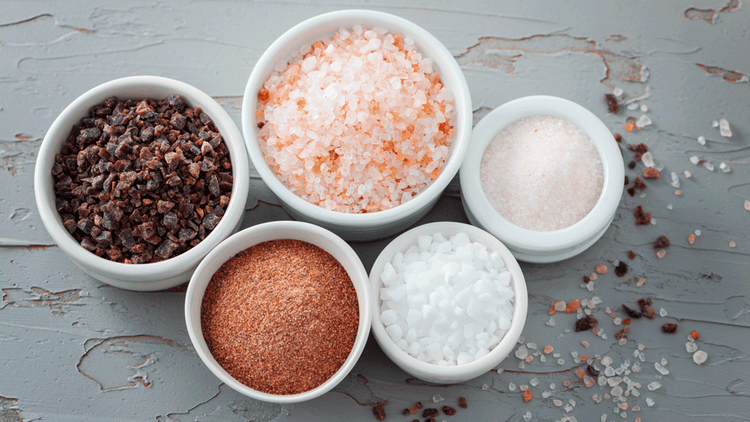
8. Mineral ingredients
Below is a table comparing the mineral content between different salts:
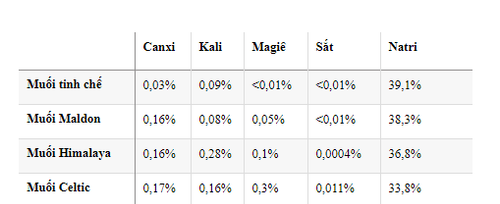
As you can see, Celtic salt contains the least amount of sodium, while magnesium and calcium make up the largest percentage of other salts. Himalayan salt contains only trace amounts of potassium.
In addition, the above indicators also have a certain meaning, for example the magnesium content is 0.3% in Celtic salt, which means you need to consume 100 grams of salt to achieve the RDI (daily intake). .
However, you should not rely solely on these indicators when choosing salt, and ignore other salts with less minerals. In fact, this mineral provides only a negligible amount compared to what you get from food.
9. What kind of salt is the healthiest?
So far, there have not been any specific studies comparing the effects of salts on human health. Essentially, all salts have a similar structure, consisting of sodium chloride and a small amount of minerals.
When choosing salt, you should avoid salts that contain many additives, and anti-precipitation agents are often added by manufacturers during salt processing. It is important to remember that the main purpose of using salt is to add flavor to food, it is not a remedy to improve health.
Please dial HOTLINE for more information or register for an appointment HERE. Download MyVinmec app to make appointments faster and to manage your bookings easily.
Article referenced source: healthline.com





